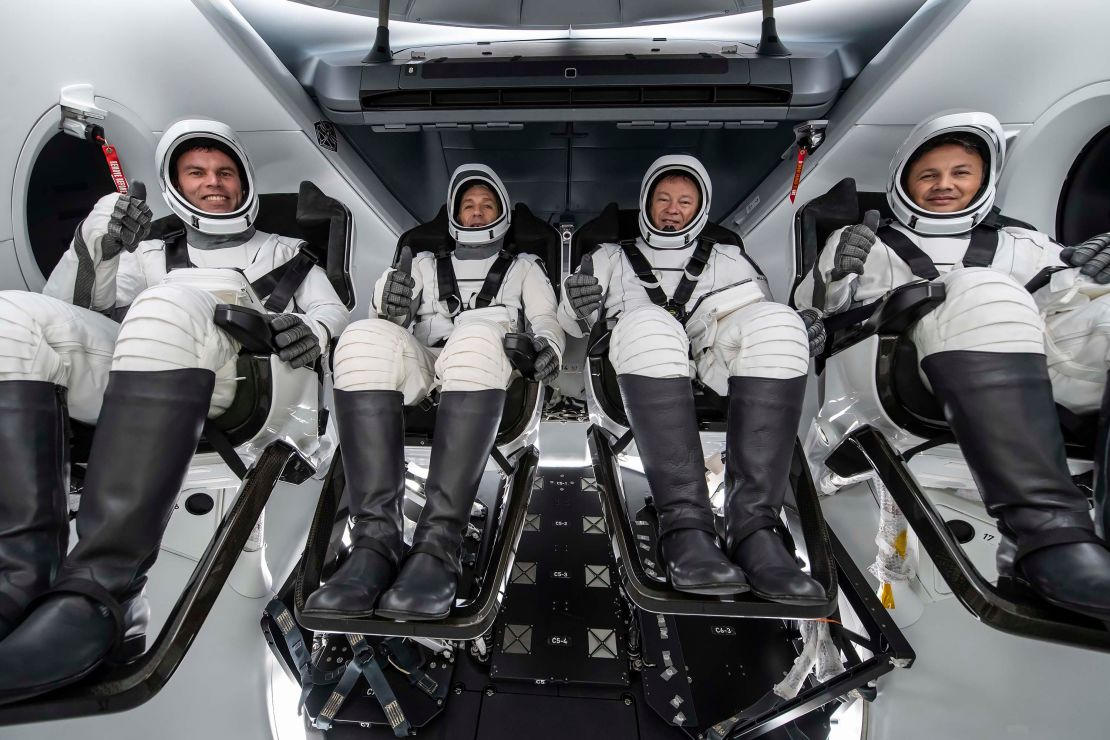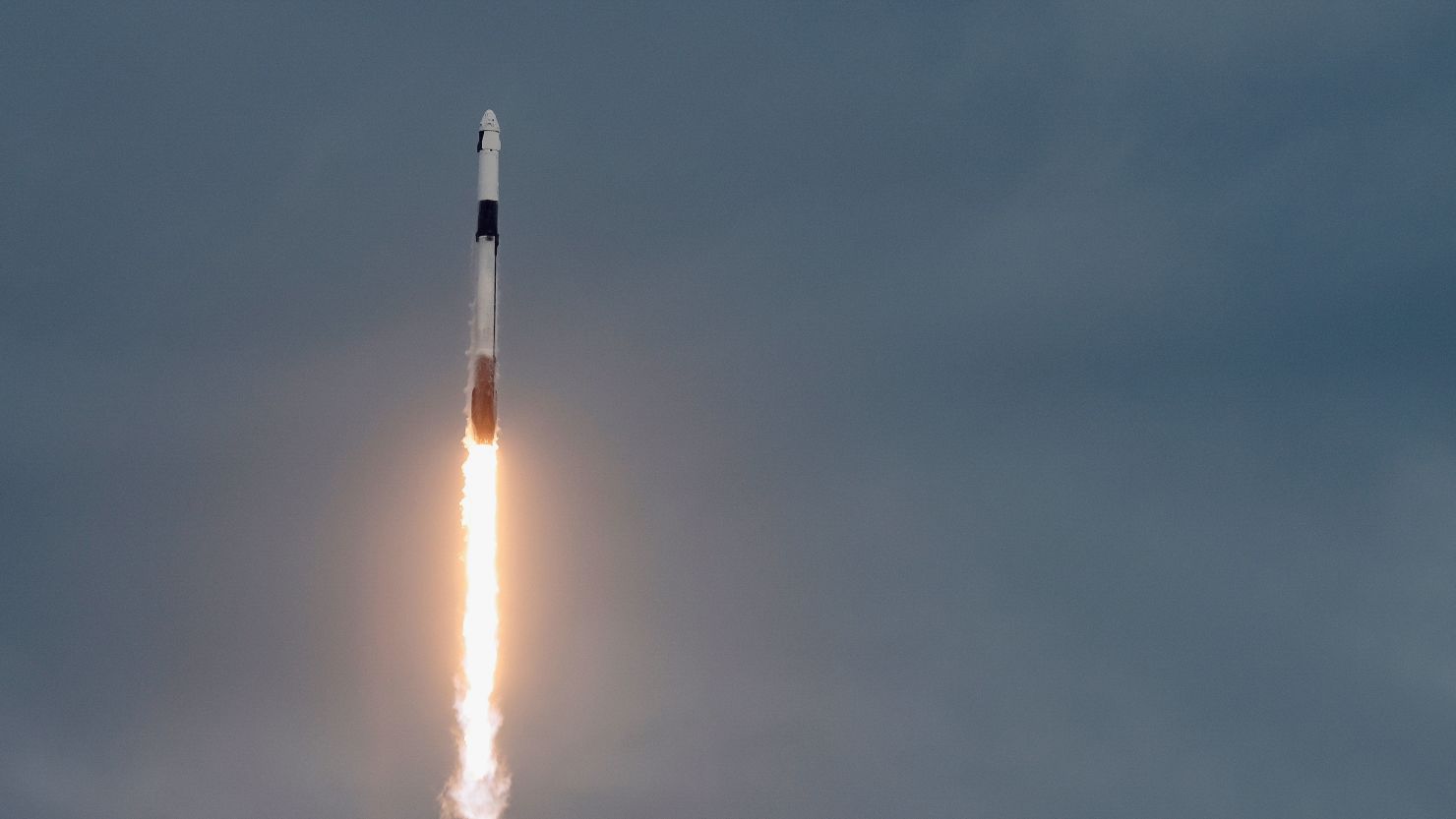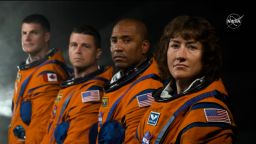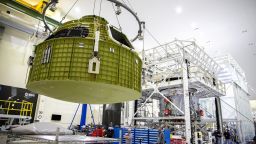Sign up for CNN’s Wonder Theory science newsletter. Explore the universe with news on fascinating discoveries, scientific advancements and more.
A SpaceX rocket took off for the International Space Station on another trailblazing mission operated entirely by the private sector. On board is a group of European astronauts, including the first person from Turkey to visit outer space.
The mission is the latest in a series of endeavors from the private sector — bolstered by NASA — that aim to churn up business activity in Earth’s orbit. The United States has for years aimed to increase commercial activity in space as NASA looks ahead to retiring the International Space Station and allowing private space stations to take over so the space agency can focus on missions deeper into the solar system, such as to the moon and Mars.
Liftoff of the SpaceX Falcon 9 rocket was slated for Wednesday, but the company was forced to delay the mission as it worked to complete final checks before launch. Benji Reed, Space X’s senior director of human spaceflight programs, told reporters during a news briefing Tuesday that teams had to work through the weekend to address issues with parachutes on the Crew Dragon capsule, which sits atop the Falcon 9 during launch.
The rocket ultimately took off at 4:49 p.m. ET Thursday from NASA’s Kennedy Space Center in Florida. After reaching space, the Crew Dragon capsule broke away from the Falcon 9 rocket and began navigating on its own, making a slow approach to the space station. The Crew Dragon is expected to dock at the orbiting outpost early Saturday morning.
The four-person crew on board Axiom-3, as this mission is called, includes Alper Gezeravcı — pronounced “Geh-zeh-rahv-juh” — a fighter pilot with the Turkish air force who is on track to mark a historic milestone as the first citizen of Turkey to reach low-Earth orbit.
Also on board is Walter Villadei, a member of the Italian air force, and Marcus Wandt, who was selected as a member of the European Space Agency’s astronaut reserve in 2022.
Leading the journey is Michael López-Alegría, a former NASA astronaut who now serves as a mission commander for Axiom Space, the Houston-based company that organized this trip with SpaceX and NASA.
Private vs. government astronauts
Axiom’s missions are designed to offer flights to the International Space Station to whomever can afford a ticket. The two previous Axiom missions — flown in 2022 and 2023 — have carried a mix of wealthy businesspeople and astronauts whose governments paid for their seats.
Thursday’s flight is the first Axiom mission in which a government or space agency has purchased all the seats. What’s more, each customer hails from a background as a military pilot, an occupation in which many astronauts have gotten their start.

The European Space Agency and the Swedish National Space Agency arranged Wandt’s ticket. The Italian air force paid for Villadei’s, and the Turkish government covered Gezeravcı’s fare.
“I’d like to underline how remarkably well-prepared they are based on their backgrounds as military aviators with many, many years of operational experience,” López-Alegría said during a December news conference. “Very similar to some of the crews that I was able to train with when I was a NASA astronaut.”
The flights operated by Axiom and SpaceX offer an alternative route to space for private citizens and astronauts from nations that are not a part of the routine crew rotation on board the International Space Station, where the staff is swapped out roughly every six months. NASA has a separate deal — worth roughly $5 billion — with SpaceX for the flights that support those crew changes, and the space agency hand selects which astronauts fly.
In contrast, Axiom organizes flights to the space station that last only a couple of weeks. Any private citizen or country can sign up, and seats have sold for $55 million each. (An Axiom executive declined to comment on pricing for this mission.)
While ESA does have deals with NASA to fly European astronauts as part of the normal space station crew rotation, this mission gave ESA a chance to grab an extra seat and add some of its research to this brief flight.
“This is also for the European Space Agency a first step to see how we can move to the post-ISS era,” noted Frank De Winne, the head of ESA’s European Astronaut Centre in Cologne, Germany. “The ISS will come to an end at some point.”
The business model mapped out by Axiom — founded by CEO Michael Suffredini, a former ISS program manager at NASA — aligns with the US space agency’s current ethos for space exploration, which includes pushing private industry to invest in space travel and eventually develop a commercial space station that can replace the aging International Space Station. The latter has already operated for more than two decades and could be decommissioned as soon as 2030.
Axiom is one of several companies that has plans eventually to build its own private space station.
Research in space
The Axiom-3 crew is expected to spend 14 days on the space station, working alongside the seven astronauts already on board the orbiting laboratory.
The group will have “a full docket of research, over 30 experiments,” Axiom President Matt Ondler said during a December news briefing about the mission. “The crew will be continually working on experiments and research programs. In fact, we had more research than we could fit into the mission, which I think is a great example of how much demand there is.”
The science includes work that will research how astronauts might predict if they are at risk for motion sickness in space, studying lightning on the tops of clouds, tests on proteins linked to neurogenerative diseases such as Alzheimer’s, and an experiment that will explore how gene-edited plants respond in microgravity.





